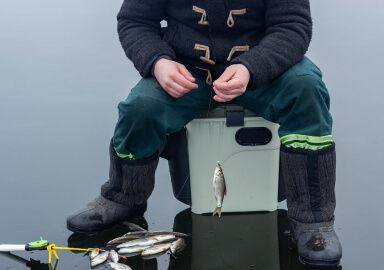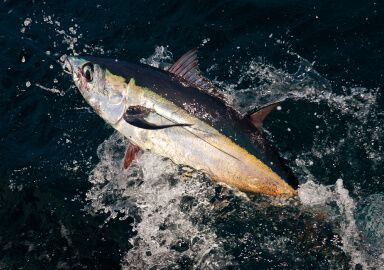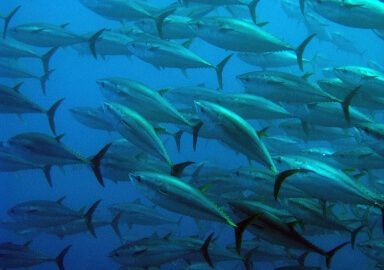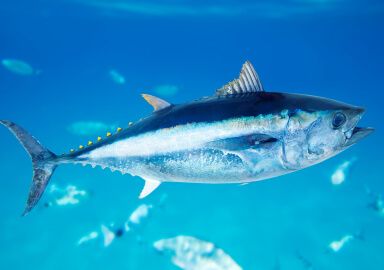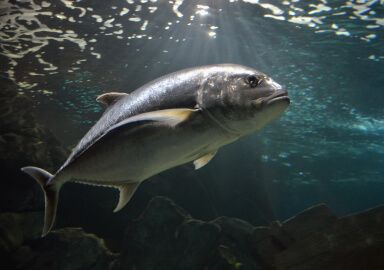Dogtooth Tuna
Dogtooth tuna are a fierce, and sometimes dangerous, top predator of the reefs, which they continuously patrol in search of prey.
View 23 listings
23
listings
–
price starting from
7
countries
–
to the nearest trip
Where and When?
From the Red Sea southwards to South Africa and then eastwards to Japan and Australia, dogtooth tuna can be found patrolling reef edges and “drop offs” for suitable prey. They cruise in the upper layers of ocean waters from about 10 m. (33 ft.) down to over 300 m. (948 ft.) and prefer warmer waters between 20 and 28 °C (68-84 °F). Some of the most popular areas to fish for dogtooth tuna are along much of the Great Barrier Reef, off Australia, and off Okinawa Island (Japan). Other “hot spots” for dogtooth tuna are the Seychelles, Fiji and some areas of the Red Sea.
Dogfish tuna can usually be caught throughout the year, but in the more temperate areas they are often less active in winter or migrate to warmer waters. Large numbers of dogtooth tuna are caught by commercial pole fishers wherever they can find them and numbers have declined in some areas due to this heavy exploitation. Nearly all recreational fishing for dogtooth tuna is carried out in daylight as the species is almost exclusively an optic feeder.
About Dogtooth Tuna
Dogtooth tuna are a typical looking tuna with a compressed, elongate body and are a brilliant blue or black above, blending down the sides to a silvery belly. As they swim continuously their mouths remain open, ready to catch the small fish and squid that are their main prey. They are top predators on many coral reefs but share this with species like the giant trevally, large groupers and several species of shark.
Dogfish tuna are easily identified by 14 to 31 pairs of large, fearsome, sharp, conical (dog) teeth on the upper jaw that mesh with 12 to 24 pairs on the lower jaw. Maximum recorded length is 2.48 m. (98 in.) with a mass of 13 kg. (28.7 lbs.). Most dogtooth tuna that are caught are smaller, around 1.9 m. (75 in.) in length. They feed voraciously on small fish and squid but may try to eat anything suitable that they come across. They are an offshore species, but are usually associated with reefs, particularly coral reefs. They are mostly solitary, although they occasionally form loose associations of a few similar sized individuals.
How to Catch?
There are many areas of the world where there are now suitable, well developed and equipped, recreational tuna fishing operations. In areas where dogtooth tuna occur, they are a popular target and all the usual “tuna fishing” methods are employed. All fishing is carried out from boats, usually small charter craft that carry out day trips and dogtooth are one of the larger and more exciting tuna that can be caught. There are usually no permits required or limits imposed, but, as the species is undoubtedly under heavy pressure and the flesh is not particularly sought after, catch and release is often the best and wisest option.
Trolling is the most popular fishing method, using a wide variety of mostly artificial lures such as spoons, plugs, feathers and plastics, but drifting can also work casting the same lures or live bait. One general rule is that you have to retrieve continuously and usually quickly or very quickly, to entice a dogtooth tuna to strike. Another important rule is to be extremely careful when landing, or even after landing, the fish. The “dog teeth” can inflict extremely painful, and potentially lethal, injuries on unsuspecting anglers who think the fight and danger are over.





